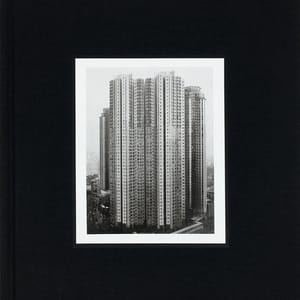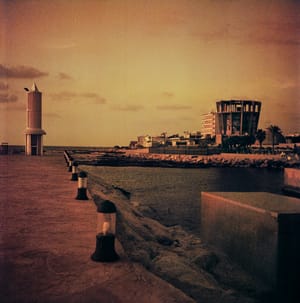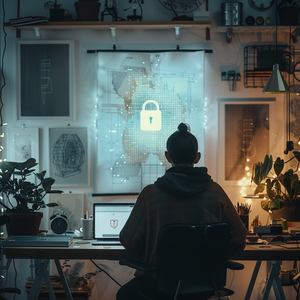In the world of photography, breaking the rules can lead to extraordinary creative breakthroughs. Experimental photography encourages photographers to step outside traditional boundaries and explore unconventional techniques. This comprehensive guide delves into the exciting realm of experimental photography, offering tips and inspiration to help you create unique, abstract, and artistic images. Whether you're playing with camera settings, trying out unique lenses, or experimenting with post-processing, this article will inspire you to push the limits of your creativity.

Photography, like any art form, is bound by certain rules and conventions. These guidelines help photographers create balanced, well-composed images that are pleasing to the eye. However, some of the most iconic and impactful photographs break these rules, challenging viewers to see the world from a different perspective. Experimental photography is all about exploring new techniques, embracing unpredictability, and pushing the boundaries of traditional photography. This article explores the various ways photographers can break the rules to create innovative and compelling images.
Unconventional Techniques

Camera Settings
Long Exposures
Long exposure photography involves using slow shutter speeds to capture the movement of light and create surreal, dreamlike images. This technique is often used to photograph landscapes, capturing the flow of water or the movement of clouds, but it can also be applied to urban scenes to blur the motion of people and traffic.

Tip: Use a tripod to keep your camera steady and prevent unintended blur.
High ISO for Intentional Noise
While high ISO settings are typically avoided due to the noise they introduce, intentional use of high ISO can add a gritty, raw quality to your images. This technique is particularly effective in black and white photography, where the noise can enhance the texture and mood of the scene.
Tip: Experiment with different ISO settings to find the level of noise that complements your artistic vision.
Unique Lenses

Fisheye Lenses
Fisheye lenses create a spherical, distorted view of the world, offering a unique perspective that can be both playful and thought-provoking. These lenses are great for capturing wide scenes with a creative twist, making them popular in architectural and landscape photography.
- Tip: Use the distortion to your advantage by positioning subjects in the center of the frame, where they will appear more natural.
Macro Lenses
Macro lenses allow you to capture extreme close-ups of small subjects, revealing details that are often invisible to the naked eye. This technique is perfect for photographing insects, flowers, and everyday objects, transforming them into fascinating works of art.
Tip: Pay attention to the background and lighting, as these can greatly affect the overall composition and impact of your macro shots.
Unusual Angles

High and Low Perspectives
Shooting from high or low angles can dramatically change the way a subject is perceived. A high-angle shot can make a subject appear small and vulnerable, while a low-angle shot can convey power and dominance. Experimenting with these perspectives can add a dynamic element to your images.
Tip: Combine high and low angles with other techniques, such as long exposures or unique lenses, to create truly distinctive images.
Reflections and Refractions
Incorporating reflections and refractions into your compositions can create intriguing and abstract images. Look for reflective surfaces like water, glass, or metal, and experiment with shooting through prisms or other transparent objects to distort and transform your subjects.
Tip: Use manual focus to ensure sharpness in the areas you want to highlight, as reflections and refractions can confuse your camera’s autofocus system.
Creative Post-Processing

Abstract Effects
Double Exposure
Double exposure involves combining two or more images into a single frame, creating a layered, dreamlike effect. This technique can be achieved in-camera or through post-processing software, allowing for endless creative possibilities.
Tip: Choose images with contrasting elements, such as a portrait and a landscape, to create a striking juxtaposition.
Surreal Imagery with Composites
Composite photography involves blending multiple images to create a surreal or fantastical scene. This technique requires careful planning and execution, as well as advanced post-processing skills, but the results can be truly breathtaking.
Tip: Pay attention to lighting and perspective to ensure a seamless blend between the different elements of your composite.
Software Tools
Photoshop and Other Editing Programs
Photoshop and other editing programs offer a wealth of tools for creating abstract and artistic effects. From manipulating colors and textures to applying filters and overlays, the possibilities are limited only by your imagination.
Tip: Experiment with different tools and techniques, and don’t be afraid to combine multiple effects to achieve your desired look.
Inspiring Projects

DIY Projects
Homemade Filters and Lenses
Creating your own filters and lenses can lead to unexpected and unique results. Try using household items like plastic wrap, colored gels, or even a pair of sunglasses as makeshift filters, or experiment with attaching unconventional lenses to your camera.
Tip: Keep a journal of your experiments, noting the materials and techniques used, so you can replicate or refine successful results.
Using Everyday Objects for Unique Effects
Look around your home for everyday objects that can be repurposed for creative photography. A glass of water, a kitchen strainer, or a piece of fabric can all be used to add interesting textures and patterns to your images.
Tip: Use a macro lens to get up close and personal with these objects, revealing their hidden details and transforming them into works of art.
Collaborations
Working with Other Artists and Photographers
Collaborating with other artists and photographers can open up new creative avenues and inspire you to try new techniques. Whether you’re working with a painter, a sculptor, or another photographer, combining your skills and perspectives can lead to innovative and unexpected results.
Tip: Be open to feedback and experimentation, and don’t be afraid to step outside your comfort zone.
Incorporating Mixed Media Elements
Blending photography with other art forms, such as painting, drawing, or digital art, can create unique and visually striking images. Try incorporating hand-drawn elements into your photos, or experiment with digital overlays and textures.
Tip: Use layers and masks in your editing software to seamlessly blend different media elements into your compositions.

Examples and Case Studies
Showcasing Experimental Photography Projects
Studying the work of other experimental photographers can provide valuable insights and inspiration. Look for artists who push the boundaries of traditional photography and explore unconventional techniques.
Tip: Analyze their compositions, lighting, and post-processing methods to understand how they achieve their unique effects.
Analyzing the Creative Process Behind Notable Works
Understanding the creative process behind notable experimental photography projects can help you develop your own approach. Look for interviews, behind-the-scenes videos, and detailed project descriptions to gain insight into how other photographers work.
Tip: Take note of the challenges they faced and the solutions they found, and apply these lessons to your own projects.
Experimental photography is all about breaking the rules and pushing the boundaries of traditional photography. By exploring unconventional techniques, embracing unpredictability, and being open to new ideas, photographers can create unique and compelling images that stand out from the crowd. Whether you’re experimenting with camera settings, trying out unique lenses, or playing with post-processing effects, the key is to keep an open mind and let your creativity run wild. Platforms like Andromak offer valuable resources and tools to help photographers explore and showcase their experimental work, providing inspiration and support along the way.

References
- "Experimental Photography: Tips and Techniques," FixThePhoto. [Source](https://fixthephoto.com/experimental-photography.html)
- "The Art of Experimental Photography," Great Big Photography World. [Source](https://greatbigphotographyworld.com/experimental-photography/)
- "Breaking the Rules: How to Create Stunning Experimental Photography," Digital Photography School. [Source](https://digital-photography-school.com/experimental-photography/)





